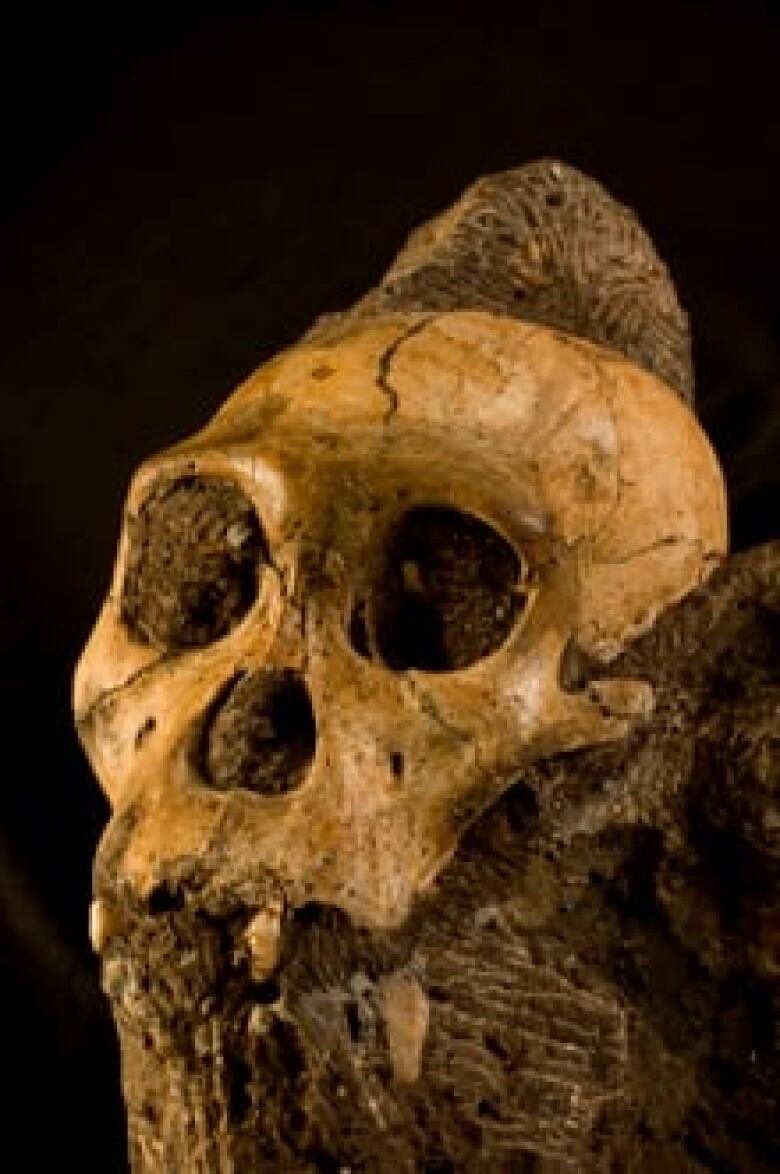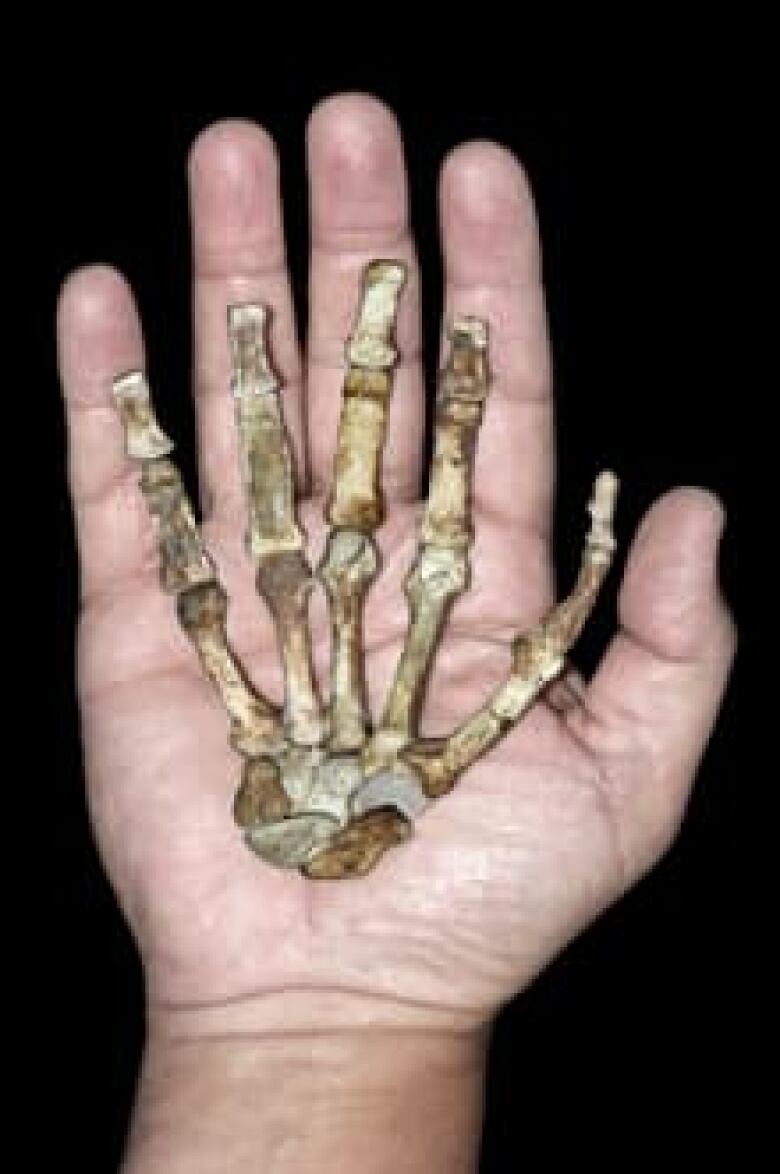Fossils revise human evolution theories
A pair of two-million-year-old fossils with a mish-mash of human and ape characteristics have changed the way scientists think human-like features evolved.
A detailed new analysis of an adult female and a young male of a species known as Australopithecus sediba reveals they had the most human-like pelvis and hand ever found,and a grapefruit-sized brain and an ape-like heel built for tree climbing, said a series of studies published Thursday in Science. The fossils were first discovered in 2008.

The species is "uniquely positioned to be a good candidate ancestor for the earliest members of the genus Homo," said Lee Berger, the researcher at the University of Witwatersrand in Johannesburg, South Africa, who led the project, in a podcast interview with Science.
"But if it is, the evolution probably didn't happen the way we thought it did."
Humans are the only living primates in the genus Homo, but scientists place many extinct hominins in the same genus, including Neanderthals and more primitive species such as Homo erectus and Homo habilis that have lived in the past two million years.
Based on fragmentary fossils of those hominins, scientists previously thought that large brains may have been closely linked to tool-making and that a human-like pelvis evolved to make it possible to give birth to babies with large brains.
Hominins and hominids
Humans are part of a larger group of closely related human-like species, such as Neanderthals, called hominins. All hominins are themselves part of a larger group known as hominids that includes all the great apes such as chimpanzees and gorillas.
Au. sediba's small brain suggests that the human pelvis shape evolved for a different reason, said Job Kibii, the University of Witwatersrand researcher who led the pelvis study.
And the hominin's human-like hand, which seems well adapted for making and using complex tools, calls into question "a lot of our preconceived notions about what was required for tool-making," said Tracy Kivell, the Canadian researcher who led the study of Au. sediba's hand, at a news teleconference.
"Its not necessarily something that requires the huge cognitive leap that we think it might."
Found in collapsed cave
The two fossils examined in the studies were among five of their species discovered by Berger and a small expedition at the caves of Malapa, about 48 kilometres northwest of Johannesburg, South Africa, in 2008 andannounced in 2010.

The hominins are believed to have fallen intoa deep underground cave along with other animals when the cave roofcollapsed. Based on chemical dating of the cave sediments, the researchers concluded that the fossils had been preserved there for 1.977 million years.
Unlike previous hominin fossils that were mostly found very incomplete as small fragments, the Au. sediba fossils were extremely complete and well-preserved, with many of the bones in the same position relative to each other that they would have been in life.
That allowed the researchers to conduct a detailed study of the hand, foot, pelvis and cranium of the species.
The cranium of the young male was scanned at the European Synchrotron Radiation Facility to create an endocast, a model of the impressions left on the inside of the cranium by the brain. Mostly, it showed an ape-like brain, but there were some expansion of the area of the brain directly behind the eyes relative to chimpanzees, said Kristian Carlson, the University of Witwatersrand researcher who led that part of the study.
Brain changes
That suggests that some reorganization was taking place in hominin brains before they started growing larger. Carlsonacknowledged that it would make sense for the brain to change along with changes to the hand to accommodate tool-making and that the expanded part of Au. sediba's brain is linked to higher cognitive functions and capabilities in humans, such as the origin of language or multitasking.But hewas reluctant to speculate about what capabilities its expansion might have given Au. sediba relative to chimpanzees.
"That's something I think that one really can't say," he said.
Other parts of Au. sediba's anatomy seemed somewhat easier to interpret.
Kivell, a researcher at the Max Planck Institute for Evolutionary Anthroplogy in Leipzig Germany, who is originally from Alberta, said Au. sediba's long thumb and short fingers are very human-like proportions that would have allowed it to make the same kinds of fine movements as humans to manipulate objects. In fact, the hand is much more modern-looking than that of Homo habilis, which had longer fingers and a shorter thumb like apes, she added.
Bernhard Zipfel, the researcher at the University of Witwatersrand in Johannesburg who led the study of Au. sediba's foot, said there is a lot of evidence that Au. sediba walked uprightthe leg bone joins a human-like ankle the way it does in modern humans, and there is some evidence for a human-like arch and Achilles tendon.
But both the hand and foot show ape-like features, such as slightly curved fingers and a primitive heel, that suggest Au. sediba was also a tree climber.
While the researchers said they were surprised to see many of those ape-like and human-like features together, they were quick to say the strange combinations should not be surprising.
"This is what evolutionary theory would predictexactly this confusion, this mixture of features of Australopithecus and Homo," said Darryl J. de Ruiter, a researcher at Texas A & M who co-authored one of the studies. "In my mind, it's strong confirmation of the evolutionary theory."












_(720p).jpg)


 OFFICIAL HD MUSIC VIDEO.jpg)
.jpg)



























































































